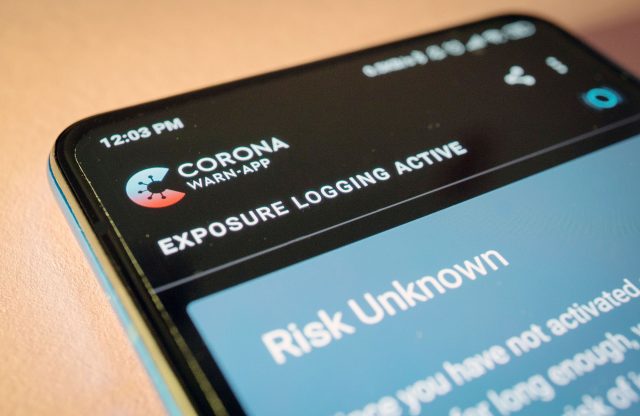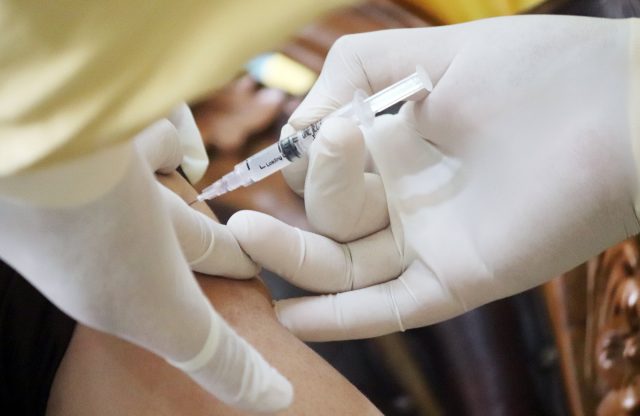Dr Robert Hess: What next for the SARS-CoV-2 pandemic?

Dr Robert Hess – 11/02/2021
What next for the SARS-CoV-2 pandemic?
The number of infections worldwide is on the increase, and with it, the number of vaccine breakthroughs. However, it is not only the rising rate of infection that is the root cause of this, but also the waning effect of the vaccines themselves. Nevertheless, individuals without any form of immunization are significantly less protected against COVID‑19 disease, and the mRNA booster jabs seem to be delivering on their promise of offering almost complete protection. There are multiple factors at play here that will continue to occupy our attention this winter. In the meantime, this is how we see the current situation.
How prevalent are vaccine breakthroughs, and has their number increased? The number of vaccine breakthroughs worldwide is increasing. All manufacturers and vaccines are affected. A vaccine breakthrough occurs when a fully vaccinated person contracts a coronavirus infection with clinical symptoms.
According to the weekly report issued by the Robert Koch Institute (RKI), 95,487 fully vaccinated persons in Germany, have already been infected with the coronavirus since February. In the week of 27th September ‑ 24 October alone, almost 41,000 vaccine breakthroughs occurred among 18- to 59-year-olds. Measured across the entire period since the start of the vaccination campaign in Germany, the percentage of vaccine breakthroughs among symptomatic COVID‑19 cases in this age group has risen to 10.9. However, if we look only at the last four weeks, the ratio is significantly higher at 37.5 percent.
Increases can also be observed in the over‑60s age group, where the percentage of vaccine breakthroughs among symptomatic COVID‑19 cases is 16.1 for the period since the start of the vaccination campaign. And when we take the figures from only the last four weeks, this percentage increases to 58.9.
Other European health authorities are also reporting that, in some regions, half of the new infections are among the fully vaccinated, and the trend is unfortunately upwards. According to the UK government, four out of ten new hospital patients currently being admitted for coronavirus infection have been vaccinated.
In the USA, breakthrough infections were studied in six states – California, Colorado, Massachusetts, Oregon, Utah, Vermont and Virginia – as the authorities there collect the most detailed data on the disease. Whether their findings can be extrapolated to the entire USA is therefore unclear, but breakthrough infections in those six states accounted for 18 to 28 percent of registered cases during September. Among those who had been vaccinated, Johnson & Johnson recipients displayed slightly higher rates of vaccine breakthrough and of related deaths. Additionally, those vaccinated with Pfizer-BioNTech had slightly higher rates than recipients of Moderna, which can most likely be attributed to dosage differences.
Which age groups are affected?
Vaccination breakthroughs are occurring in all age groups. The proportion of breakthroughs is highest among individuals over 60 years of age. In both the EU and the USA, it appears that it is mainly older persons who are being hospitalized with the more acute infections, as well as individuals whose immune system is relatively weak or who have some sort of immunodeficiency. According to CDC data, 74 percent of vaccine breakthroughs occur in adults aged 65 and older.
Why are there so many vaccine breakthroughs?
The statistics show that vaccine breakthroughs tend to increase as more people are vaccinated against a particular pathogen. In the case of SARS-CoV-2, however, this is not the only reason, as multiple factors are involved here. Firstly, the virus now has renewed opportunities to spread, because most countries have relaxed their regulations on social distancing and face coverings, and because the northern hemisphere is entering the colder winter months. Secondly, the dominant form of the virus is still the Delta variant which is more contagious than the original “wild type” (i.e. Wuhan) or successor Alpha variant and also more successful in undermining vaccine efficacy.
In our opinion, the reason why vaccine breakthroughs have increased so rapidly, especially in recent weeks, is due to dwindling vaccine protection. Current studies even indicate that protection could be as low as 20 per cent only four months after the second dose of a COVID‑19 vaccine. Although a double dose is effective against the Delta variant, the protection it affords begins to diminish after only 30 days. A British study in August found that the effectiveness of the vaccine dropped to 90%, 85% and 78% after 30, 60 and 90 days, respectively. The data from such studies may vary, but the take-home message is that we too have observed the phenomenon of rapidly declining protection during the regular antibody level checks we perform on our clients. We therefore have to assume that the antibodies developed as a result of vaccination wane more quickly than was previously thought and generally published.
So, what are the causes of vaccine breakthrough?
Weakened immune system and age: An already weakened immune system will often be a decisive factor. This mostly affects cancer patients undergoing chemotherapy, patients with autoimmune diseases or the elderly. Especially in senior citizens, it is often the case that the immune system no longer responds adequately to immunization.
Mutations: Mutations also impair the effectiveness of the vaccine. The aggressive and significantly more contagious Delta variant reduces the efficacy of the vaccines. This is because this mutation is better adapted than its predecessors to evade the antibodies that are formed after vaccination. Although the current crop of vaccines are also effective against the Delta variant, more antibodies are needed to neutralize it.
Waning effect: As with almost all vaccines, the effect wears off after some time. This seems to be happening somewhat faster with the COVID‑19 vaccines than initially thought. Data from Israel gathered around mid-July 2021 was already indicating that the effectiveness of the BioNTech/Pfizer vaccine had begun to diminish. Israel was therefore one of the first countries to recognize the need for a follow-up booster jab. Their data showed that, after three months, antibody concentration was reduced by about half.
So, is vaccination pointless?
No, on the contrary. Vaccination protects against infection and, above all, staves off a severe course of the disease. Even if the protection against infection declines over time, protection against the potentially severe consequences remains. According to the CDC study, vaccinated people are eight times less likely to become infected and 25 times less likely to be hospitalized and/or die. A survey of intensive care units also confirms that most COVID‑19 patients admitted are unvaccinated. Data from the UK and Europe suggests that vaccination affords 90% protection against hospitalization. Among those aged 60 and older, protection against the risk of hospitalization is 86 percent. Corona vaccines protect against a fatal outcome by as much as 98 percent (87 percent in the over-60s). But in any case, the only sensible way to drive down the rising number of infections is to refresh vaccine protection with a booster jab.
How important are booster jabs?
Due to the rising numbers of vaccine breakthroughs, booster vaccination has taken on a new urgency. Some countries fear they will be entering a fourth wave around Christmas time, and governments are appealing to their citizens to get their booster without delay. But the vaccination program is faltering in many places, and the approach taken by individual countries also varies greatly. In Germany, the booster vaccine is so far only recommended for the over-70s and the immunocompromised. On Friday, however, the German health minister spoke out in favor of offering booster vaccination to all citizens. Sweden and the USA currently offer a booster jab to everyone over the age of 65 and the UK to everyone over 50 (as well as the immunocompromised, health workers, the occupationally exposed, etc.). Israel has already completed the majority of its booster vaccinations. The country was already battling a fourth coronavirus wave in the summer but now seems to have survived the immediate crisis. According to the Israeli health authorities, this is mainly due to the widely administered third vaccination against the virus.
Until now, all booster vaccinations have been given at least six months after the second dose of Pfizer/BioNTech or Moderna. The length of this interval is now up for debate, especially in view of rapidly declining antibody levels. Thanks to our capacity for monitoring the individual antibody levels of our clients, we have been able to ascertain that some would benefit from a booster jab as early as four months after the second dose. If the vaccine administered was J&J, a booster is already appropriate after only four weeks. This is an option that we also recommend, as we have found that the antibody gain from vaccination with J&J is insufficient.
With governments adopting so many different approaches and also national graphs peaking at different times, it will be interesting to see what stage the pandemic has reached in different countries two or three months further along the line.
What do initial data on the effectiveness of the Pfizer/BioNTech booster tell us?
The first full study has shown that a third dose of the Pfizer vaccine provides an “excellent” level of immunity. On 21st October, Pfizer/BioNTech shared results from their Phase 3 study involving more than 10,000 volunteers. These showed that the booster jab conferred 95.6 percent efficacy. In the half cohort who did not receive booster vaccination, 109 persons later became symptomatically infected. In the half who had received booster vaccination, this number was only five. It also showed that those who received a third dose of the Pfizer vaccine almost a year after their first two had higher protection against symptomatic infections than those who had received only two doses. An earlier study based on real-world population data from Israel found a similar increase in protection against serious illness.
Scientists believe that a decrease in the protection afforded by the first two doses is more than compensated for by the third. However, this refers only to a complete and exclusive series of Pfizer/BioNTech vaccination; there are no comparable data yet on the effectiveness of a third dose of Pfizer/BioNTech to top up a course of AstraZeneca or J&J. Two further studies on booster vaccines were also published in the October edition of New England Journal of Medicine. One found that antibody levels to the Delta variant increased almost tenfold after a booster shot of the Pfizer vaccine. We too have observed this antibody increase in our clients who had already received a booster vaccination.
The long-term prospects may at first seem somewhat daunting, but the data speak for themselves. SARS-CoV-2 will remain with us for the foreseeable future, and we will therefore have to learn how best to live with it. Although we may have hoped for even more ways to combat the coronavirus at this point, science never sleeps and we expect that there will be more to come in the future, including not only new vaccines but also drugs to treat a COVID‑19 infection. Apart from having a well-armed immune system, our defenses against a SARS-CoV-2 infection are “limited” to the best available vaccines. But this weapon seems to be effective enough when applied correctly and affords satisfactory protection for the time being. The realization that antibody levels decrease more rapidly than expected after a second dose of vaccine came as a surprise to many, but the phenomenon of diminishing protection over time is nothing new and can also be observed with many other vaccines.
Vaccines and subsequent responses by the immune system are under permanent review and subject to reinterpretation. While constant chopping and changing of rules and regulations may not always be entirely understandable and can at times be unsettling and demoralizing, it is the only realistic way to tackle the pandemic. We learn something new every day. The biggest advantage we see for our clients in this context is that we are not only privy to the latest research findings but can also incorporate them directly into our individual client concept. The specific data on each individual enables us to make precisely tailored recommendations regarding optimal protection against COVID‑19 and to use our own A.I. data sets in the process. Especially against the background of faster than expected decline in antibody levels and T-cell immunity, this puts us at an enormous advantage.
As we cannot yet predict how severe the coming winter will be, we would urge you to continue to maintain your immunity by following our general recommendations and taking your individually formulated supplements regularly. We will keep you informed and continue to advise you individually on booster vaccinations. If you have any questions, do not hesitate to contact our team of consultants.
.

